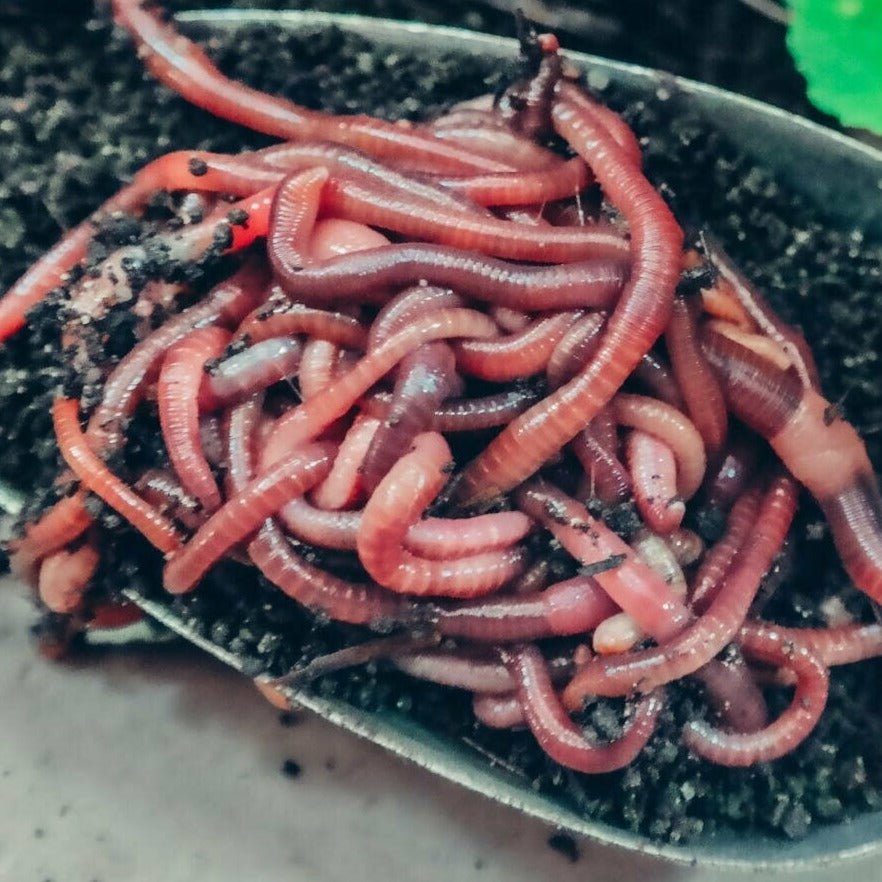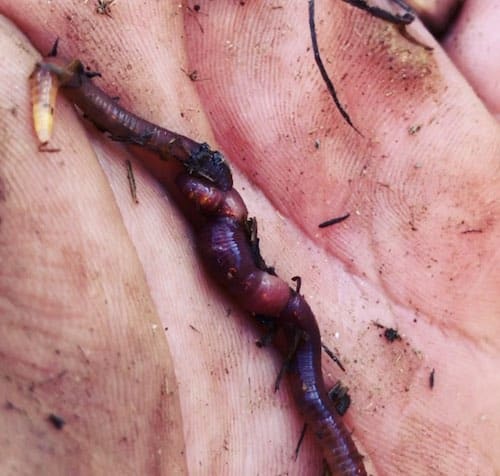Red Wigglers: The Unsung Heroes of Organic Waste Recycling
Red wigglers, or Eisenia fetida, serve as crucial representatives in the natural waste recycling process, transforming discarded products into beneficial vermicompost. As the globe progressively looks for options to fight waste accumulation and boost agricultural performance, comprehending the role of these worms comes to be vital.
What Are Red Wigglers?
The remarkable strength of red wigglers, clinically called Eisenia fetida, highlights their essential duty in organic waste recycling. These tiny, reddish-brown earthworms are usually located in disintegrating raw material, such as compost heaps and manure loads. Lake Hickory Bait. Unlike other earthworm types, red wigglers grow in nutrient-rich atmospheres and are very efficient at damaging down natural materials, making them necessary for vermicomposting

(Red Wiggler Express)In addition to their function in waste decrease, red wigglers add to dirt health by improving soil structure and oygenation via their delving tasks (Lake Hickory Bait). Their presence in composting systems not only enhances decay rates however likewise advertises a lasting strategy to lose monitoring, illustrating their significance in environmental conservation efforts
Benefits of Composting With Worms
Composting with worms, especially red wigglers, uses numerous benefits that boost both waste monitoring and dirt wellness. Initially, these worms successfully damage down organic waste, converting it into nutrient-rich vermicompost that enriches soil. This process accelerates decay, permitting a much faster recycling of kitchen scraps and other natural materials contrasted to traditional composting methods.
In addition, the vermicompost generated by red wigglers is including valuable microbes, which aid enhance soil framework, aeration, and moisture retention. This boosts the total health and wellness of plants, promoting strenuous development and enhanced yields in yards and agricultural settings. In addition, using worms in composting lessens the production of greenhouse gases, such as methane, adding to a much more sustainable waste monitoring system.

How to Start Vermicomposting
Establishing a vermicomposting system is a simple procedure that can generate substantial benefits for both waste management and soil enrichment. To begin, select an appropriate container, such as a plastic bin or wooden box, with appropriate air flow openings to make sure appropriate air movement. The measurements need to preferably be about 2 feet by 3 feet, permitting enough room for the worms to grow.
Following, prepare bed linens product, which can include shredded paper, cardboard, or coconut coir. This bed linen must be moistened to produce an appropriate habitat for the worms. As soon as the bed linens remains in location, introduce red wigglers (Eisenia fetida) into the bin, generally around one pound of worms for every square foot of surface location.
Adhering to the positioning of worms, add organic waste, such as fruit and vegetable scraps, coffee premises, and smashed eggshells. Prevent adding dairy, meat, or oils, as these can develop smells and attract pests. Ultimately, place the bin in a shaded, temperature-controlled area to keep ideal conditions for worm activity. With these steps, you will efficiently launch a vermicomposting system that adds to sustainable waste monitoring and enriches your soil.
Maintaining a Healthy And Balanced Worm Container
(Lake Rhodhiss Bait)Maintaining a worm bin prospering requires normal attention and treatment to guarantee the wellness of the red wigglers and the efficiency of the composting procedure. Proper upkeep starts with keeping track of the dampness levels; the container should be moist yet not waterlogged. An excellent guideline is to preserve an uniformity similar to a wrung-out sponge.
Gently mixing the bedding and food scraps every few weeks stops compaction and makes certain that all worms have accessibility to oxygen. Additionally, it is essential to feed the worms properly.
Temperature level law is another vital aspect. Red wigglers flourish in a series of 55 to 77 levels Fahrenheit. If the container ends up being as well warm or chilly, the worms might end up being stressed - Lake Hickory Bait. Periodically check for signs of health, such as worm population growth and the presence of healthy and balanced spreadings. By faithfully taking care of these variables, one can keep a durable and efficient worm bin.
Effect On Lasting Living
The effective upkeep of a worm bin not only profits the health and wellness of red wigglers however also adds dramatically to sustainable living practices. By reusing natural waste, such as kitchen area scraps and yard particles, red wigglers assist draw away significant amounts of product from garbage dumps. This reduction in waste not just reduces greenhouse gas emissions yet likewise minimizes the ecological concern connected with waste management.
Furthermore, the castings created by red wigglers work as a nutrient-rich natural fertilizer, boosting soil wellness and promoting plant development. This natural choice to chemical fertilizers sustains sustainable farming and gardening methods, reducing dependence on artificial inputs that can hurt ecosystems. In addition, worm composting cultivates recognition of waste administration, motivating people and areas to take on even more lasting habits.

Verdict
In summary, red wigglers serve as important contributors to organic waste recycling with their effective decay of organic materials. Their capability to create nutrient-rich vermicompost improves soil health and wellness and supports sustainable agricultural practices. By integrating vermicomposting right into waste monitoring strategies, people and areas can significantly reduce waste while advertising environmental sustainability. The role of Eisenia fetida in fostering healthy environments highlights the significance of these organisms in achieving lasting living and boosting dirt fertility.